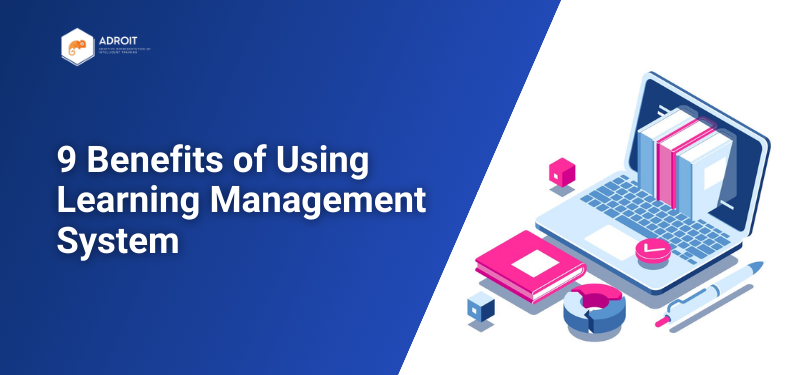
9 Benefits of Using Learning Management System
Learning management systems, or LMSs, are powerful tools that organizations use to ease learning and development in their workforce. With the right implementation, they can help organizations to save time, money, and improve their employee training programs. In this blog, we’ll explore 9 of the benefits of using a learning management system.
1. Streamlined Training Delivery: The ability to streamline training delivery is a key advantage of using a Learning Management System (LMS). By using an LMS, organizations can easily deliver online training courses to their employees, dropping the need for physical attendance and saving time and money. Additionally, LMSs allow organizations to track employee completion of courses, ensuring that all employees have received the necessary training.
2. Improved Collaboration: An LMS can improve collaboration among employees by supplying access to a shared learning environment. With the right LMS, employees can collaborate on projects, share resources, and discuss ideas, making it easier for them to stay connected and work together. This can lead to improved productivity and better results.
3. Increased Engagement: An LMS can help to increase employee engagement by supplying interactive and engaging learning experiences. By using an LMS with the right features, organizations can offer employees a more interesting and enjoyable learning experience that can help keep them motivated and focused.
4. Flexible Learning Options: An LMS allows organizations to offer flexible learning options, by making training materials accessible on multiple devices. This allows employees to access the training materials from anywhere and at any time, making it easier for them to fit learning into their busy schedules.
5. Cost Effective: An LMS can help organizations save money overall by dropping the need for physical training materials and classroom space, which can reduce overhead costs. Additionally, most LMSs come with automated grading and reporting features, which means organizations don’t have to hire added staff to manage their training programs.
6. Real-Time Tracking and Reporting: An LMS allows organizations to track employee progress in real-time, by monitoring employee activity such as course completion and test scores. With this feature, organizations can quickly find areas where employees may need added help and use the data to make informed decisions about their training programs.
7. Access to Expert Content: An LMS allows organizations to access expert content by integrating with third-party providers, supplying access to high-quality training materials such as videos, eBooks, and more. This helps organizations to ensure that their employees have access to the most current and relevant training materials.
8. Customizable Learning Experiences: An LMS enables organizations to tailor their training programs to the specific needs of their employees by allowing them to create custom courses, quizzes, and tests. With this feature, organizations have the flexibility to design individualized learning experiences that cater to the unique needs of each employee.
9. Increased Productivity: By using an LMS, organizations can perfect their training programs and boost productivity. This can be achieved by streamlining the delivery of training, providing employees with the necessary resources, and ensuring that they are prepared to work efficiently and effectively. As a result, organizations can see an improvement in performance and better results.
Consequently, a Learning Management System (LMS) can offer a wide range of benefits to organizations. From streamlining training delivery, improving collaboration, increasing engagement, to cost savings, organizations can use an LMS to enhance their training programs and boost productivity. By using these benefits, organizations can ensure that their employees are well-equipped and ready to succeed.


